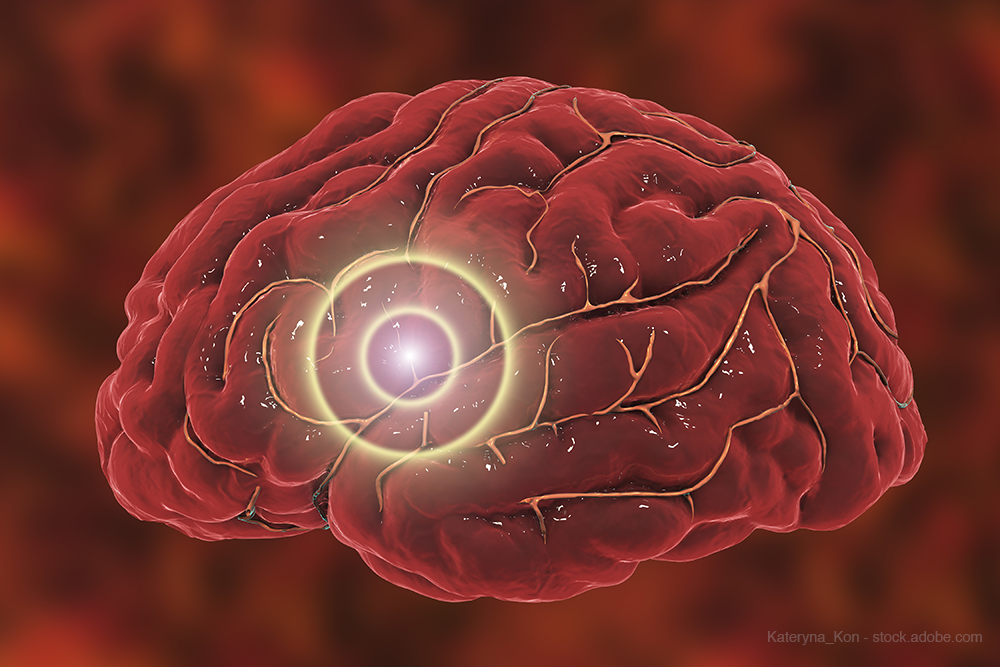Ubrogepant: A Novel Drug Mechanism for Migraine Treatment
On December 23, 2019, the FDA approved ubrogepant for the acute treatment of migraine with and without aura in adult patients.

On December 23, 2019, the FDA approved ubrogepant for the acute treatment of migraine with and without aura in adult patients.1 Ubrogepant is a calcitonin gene-related peptide (CGRP) receptor antagonist. CGRP is a protein released when the trigeminal nerve is activated. Binding of CGRP to its receptor is associated with blood vessel dilation, inflammatory mediator release, and transmission of pain stimulus to the central nervous system–mechanisms involved with migraine pathology. Blocking CGRP from binding to its receptor is a novel mechanism for migraine treatment.2
EFFICACY
Ubrogepant was approved based on the results of 2 randomized, double-blind, placebo-controlled trials. In these trials,
1439 participants were randomized to placebo, or 50mg of ubrogepant in both trials. Some patients (23%) were taking preventive migraine therapies, but none were on medications affecting CGRP. In study 1, participants were randomized
to an additional 100-mg arm. In both trials, participants were instructed to treat a migraine of moderate-to-severe intensity with the study drug. A second dose of study drug or the participant’s usual acute migraine therapy could be administered 2 to 48 hours after the initial dose as needed.
In both studies, a comparison of pain and most bothersome symptom (MBS) at 2 hours post-dose for ubrogepant versus placebo serves as the primary outcome.Both studies showed that participants taking ubrogepant demonstrated greater rates of absence of pain or MBS at 2 hours post dose compared with placebo. In study 1, both doses of ubrogepant were associated with reduced occurrence of photophobia or phonophobia compared with placebo.1
SAFETY
The most common adverse effects seen in studies with ubrogepant are nausea and somnolence. Ubrogepant is primarily eliminated via metabolism by cytochrome P450 3A4 (CYP3A4). Administration of ubrogepant is contraindicated in patients taking a concomitant strong CYP3A4 inhibitor, as this will significantly increase exposure to ubrogepant. Patients taking concomitant moderate 3A4 inhibitors should administer a lower dose (50 mg) and avoid a second dose within 24 hours of the first dose.
Ubrogepant is also a substrate for BCRP and P-gp transporters. Based on the findings of clinical interaction studies, patients taking concomitant BCRP and/or P-gp inhibitors should utilize a lower dose of ubrogepant to limit exposure. Patients with severe hepatic impairment (Child- Pugh class C) should administer the reduced dose. Patients taking strong CYP3A4 inducers, or who have end stage renal disease (CrCl <15 mL/min) should avoid taking ubrogepant. There are no data regarding the safety of treating more than 8 migraines in a 30-day period or on the effect of ubrogepant on a breastfed infant.
DOSING
Ubrogepant is approved for use in adult patients as both 50-mg and 100-mg tablets to be administered as a single dose as needed for migraine symptoms. It can be administered with or without food. A second dose may be administered no sooner than 2 hours after the initial dose, with a maximum dose of 200 mg per 24 hours. Administration of ubrogepant with a high-fat meal may reduce peak drug concentration by 22% and delay the peak drug concentrations by 2 hours without an overall change in the AUC.1
References:
1. Ubrelvy [package insert]. Madison, NJ: Allergan USA, Inc., December 2019
2. Durham PL. Calcitonin Gene-Regulated Peptide (CGRP) and Migraine.Headache. 2006;46(1):S3-S8.
